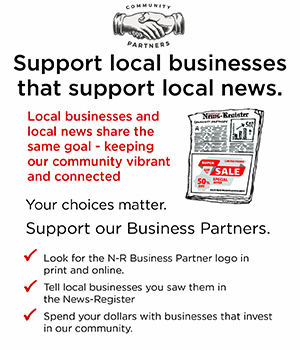Paige Benner: The rise of slacktivism
If only a “like” on Facebook triggered a gallon of clean drinking water to be delivered to an impoverished community; a retweet meant a safe home for a starving dog; or, a comment on Instagram spurred a protest for gay rights.
Unfortunately, a “like” only triggers a series of codes, a “retweet” only means that a 140 character message is republished on Twitter and a comment only spurs a series of hashtags. As with most technological developments, social media has both its advantages and disadvantages. It has made communication easier on multiple levels. It has encouraged the spread of awareness and knowledge of worldwide events and issues, allowing individuals of all ages and life experience to learn about and share opinions on international issues. These “likes” and “retweets” facilitate this spread of knowledge. That awareness, however, does not translate to direct action. Activism that occurs through social media platforms should not be considered true activism, because it is not nearly as effective as the real-world activist hierarchies.
An activist hierarchy, according to journalist and author Malcolm Gladwell, entails central leadership, trust and strong camaraderie built through face-to face interactions. The most successful revolutions and movements have been completed through hierarchies. It takes major commitment, unlike a social media activism network made of weaker connections through Facebook or Twitter.
As Gladwell states in “Small Change, Why the revolution will not be tweeted,” Facebook, and the like, are tools for building networks, which are the opposite in structure and character of hierarchies. Networks aren’t controlled by a single central authority and lack rules and authority to be productive. Decisions are made through consensus, and the ties binding people to the group are loose, Gladwell states. They succeed in informing the masses, but there is little to no quality effort put forth for a cause.
A hierarchy, on the other hand, is made of strong connections and devotion designed to last in high-risk situations. “If you’re taking on a powerful and organized establishment you have to be a hierarchy. ... The things King (Martin Luther King, Jr.) needed in Birmingham — discipline and strategy — were things that online social media cannot provide.”
Nothing could be more different than King’s actions compared to today’s “slacktivism.” Online activism is more often used as an opportunity for someone to improve his or her social status and not as an opportunity to give genuine support to an important cause. A commitment is viewable by the public could be tainted by ulterior motives. A public act of support, such as a like or a share, is beneficial in the regard that it spreads knowledge and awareness. Sometimes public support is the only way to keep people informed, but it still doesn’t require strong, lasting support. In Bruce Bower’s 2014 article in Science News, “Online causes may attract more clicks than commitments, he points out, “people gravitate towards slacktivism when others can see their minor act of support for a cause... impressing others with a public but trifling display of civic-minded concern may be all most people are willing to muster.”
That’s not to say online activism completely lacks power. Celebrity-driven movements, for example, utilized fame and influence to inspire change in the community surrounding them. Much of society “follows” celebrities the same way they “follow” their friends on social media. When a celebrity “likes” a cause, their followers take notice and follow suit. But for every case that inspires real action, there are plenty empty attempts that fail to enact concrete change.
Online activism has been credited in major world events and movements, like Arab Spring, Kony 2012 and Black Lives Matter. Fueled by social media’s capabilities and technological developments, revolutions that took place as a part of Arab Spring could not have happened without the aid of sites like Facebook and Twitter. But no matter how effective social media is in these situations, it is only supplying a platform for communication, not one for activism.
In “Exactly what role did social media play in the Egyptian revolution?” Simon Mainwaring writes, “Social media did not make this happen single-handedly, but by enabling people to connect more rapidly around shared values, it is shifting power back to the people and allowing them to re-align the interests of a country around the values that serve all its people.” Whenever social media is tied to a successful activist movement it is because it provides such a broad base for communication, not because the media is facilitating activism. The actual activism happens outside the online world.
Despite the fact that online platforms are incredibly useful in regard to the awareness they spread, or the knowledge that they share, that awareness and knowledge are not significantly beneficial in the “real-world.” Social media has created a new and exciting opportunity for people to be better informed about the events happening around them. People of diverse ages and backgrounds are exposed to international issues that would be completely irrelevant to many without the use of social media.
The exposure to these issues has sparked the desire to make a difference or show support. Unfortunately, online platforms have allowed individuals the feeling of making a difference when, in reality, they are just watching the difference being made from behind a screen. A study by Cone Communications found that six-in-10 Americans believe tweeting or posting information online is an effective form of advocacy.
In speaking about the Save Darfur campaign, Kevin Lewis of the University of California, San Diego, said, “Facebook conjured an illusion of activism rather than facilitating the real thing.” As noted in Bower’s article, the nearly $100,000 raised in three years of the campaign came from less than 1 percent of the 1.2 million Save Darfur members.
Because a single tweet does not send clean water to impoverished countries in Africa, Twitter cannot be utilized as an effective source of activism. The combination of the social networks’ weak ties, the lack of follow through in participation, and the like button’s illusion of support have created a generation bred for “slacktivism.”
Real-life activism entails a commitment to action and movement in making a change. “Liking” a cause and ending it at that is like showing up to a protest, then watching from a coffee shop window and supporting protesters who walk by. Knowledge, crucial to activism, doesn’t make any difference if those with that knowledge do not take action.












Comments